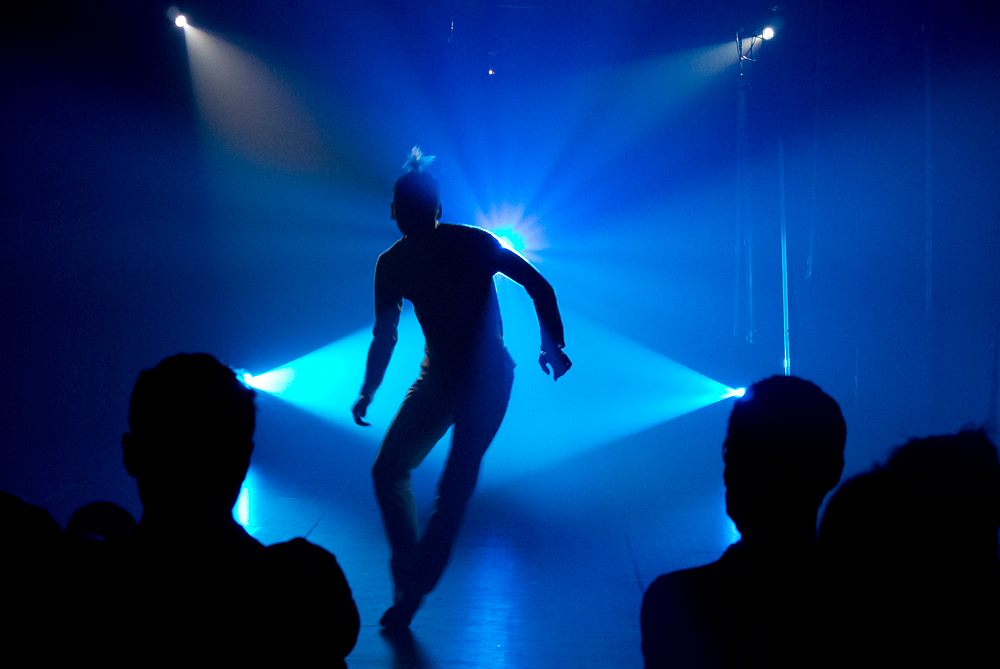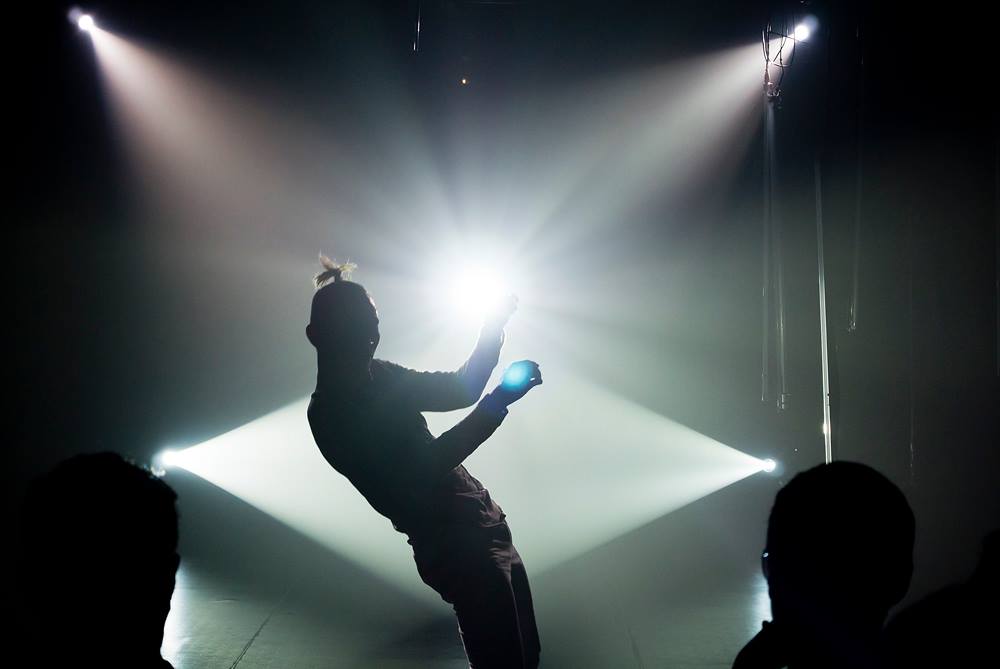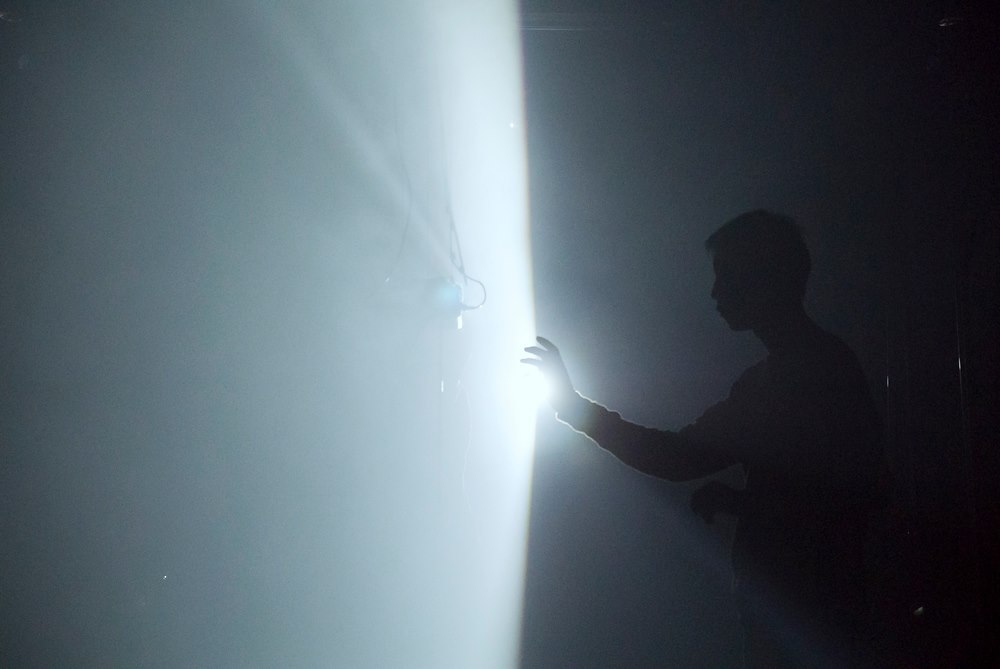2020, a multidisciplinary series, had its first showing on 27–28 June, 2015 at Space.Toccata in Petaling Jaya. Its creative producer, Tan E-Jan, responds to questions by Langkah editor Bilqis Hijjas about the creative process.
How did you generate the material?
We [E-Jan, writer Teo Wey Herng, dancer-choreographer Steve Goh and artistic director and composer Ng Chor Guan] came up with the idea when we were talking about things like physical similarities and how two people, not necessarily blood relations, can look alike—like Steve and Chor Guan! With a scientific twist, this idea can easily be about clones, and that’s how 2020 came about. 2020 also denotes perfect vision, which is something we wanted to question, and we wanted to do it with a performance which is very visual-based. So in the end, the work 2020 is about time-traveling clones, and this is a nostalgic thing for us, because we all came of age during the ‘80s hype about cloning, where everyone was debating about science and morality. The time travelling idea has to do with the idea of free will versus determinism: if you could go anywhere in time, where would you go? Going back or forwards in time disrupts the assumed idea of a progression of events, and in this we are trying to talk about change, or being an agent of change.
2020 almost didn’t make it as a title: it’s too political, it’s too short etc. However, after several heated discussions between ourselves and later with the production team, we decided to stick to it, and to try to offer different readings, or meanings, to the set of numbers—or if you like, different readings of the future. It’s a bit like giving ourselves a chance to reshape a 2020: and so we decided to try and divert everyone’s attention from its political implications and onto speculative but no less dangerous ground. If clones represent a sort of collective power, then clones joined together (or meeting—doing the same thing at the same time) is a formidable force. If this collective power works towards a common goal that is for a common good, then there can be change for the better. We’re always pushing for people to imagine different futures, or maybe even better futures; and clones are pretty interesting as a trope to bring into the performance.
How were decisions made about what was kept and what discarded?
We made decisions together, mostly. Though our parts were developed separately, a lot of the creative process involved sitting down together and talking about what worked and what didn’t. Brainstorming sessions took several months. We spent a lot of time discussing and arguing about balancing the improbability of science (science that is not understood is thought of as magic) and its plausibility. But mostly we kept in mind the idea of this project being long-term, and trying to imagine a radically different world in merely five years is at once very easy, and very difficult.
What kind of research did you do about time travel, the future, and clones?
Research was internet-based, and was mostly about the show’s technical presentation. 2020 is a very visual performance, and conveying the ideas of time travel and clones and the future in general via images was challenging and exciting. In terms of conceptual work, we also talked to many people about their visions of the future and discovered many insightful things about how clones and time travel might fit into our lives more easily than we think.
How did you share information?
We had worked together several times before so the sharing of information was not formal, though we did sit down regularly to discuss our work. Mostly the conversation happened over text messaging and the sharing of videos and pictures to better illustrate to one another our ideas about the performance.
What decisions did you make in order to maximise the venue?
We decided to smoke everyone with a smoke machine! It adds to an illusion of a deeper performance stage. The imagining of a performance venue is very interesting because it can really shape a performance. We were mostly just happy to have been able to stage it at Space.Toccata because the “black box” area provides the sort of depth we were seeking for 2020. Did you work with a dramaturge, and if so, how?
We didn’t work with a dramaturge. The story is loosely based on our own understanding of the science fiction genre, but since our focus was not on interrogating the established concepts within science fiction, we did not seek out a dramaturge. Instead we got everyone in the production team to share stories of their encounters with science fiction and built our narrative from there.
During the process, did Chor Guan and Steve find that they had more similarities other than their appearance, or fewer?
The creative process involved not just exploring similarities but creating them; in this they had quite a bit of fun learning each other’s mannerisms and such. In terms of differences, they agreed that when you’re working together sometimes differences show up, but because they were focused on being complements of each other, the differences don’t figure as much when you’re working towards a common goal, which is to produce the best possible work. Perhaps at some points the differences may seem really obvious (they are used to interacting with each other and not learning to become each other) but the differences added to, and did not subtract from, the creative process.
How does the experience effect your future intentions of working with each other and other people?
The creative process was an intense one, but the experience was interesting and, in many senses of the word, good. Because we were interested in bringing other artists into the picture, the lighting designer from Hong Kong brought many fascinating ideas to the proverbial table of collaboration. Collaborative attempts in art are one of the many things that make it magical, and we are always starry eyed about the prospect of working with different people, and of further developing the comradeship between ourselves.
 Tan E-Jan is the producer/managing director and co-founder of Toccata Studio. More
Tan E-Jan is the producer/managing director and co-founder of Toccata Studio. More
To contact the author:
Toccata Studio, etoccata@gmail.com
Featured photo: Steve Goh in 2020, Space.Toccata, Petaling Jaya, June 2015. Photo © Alvin Shen


